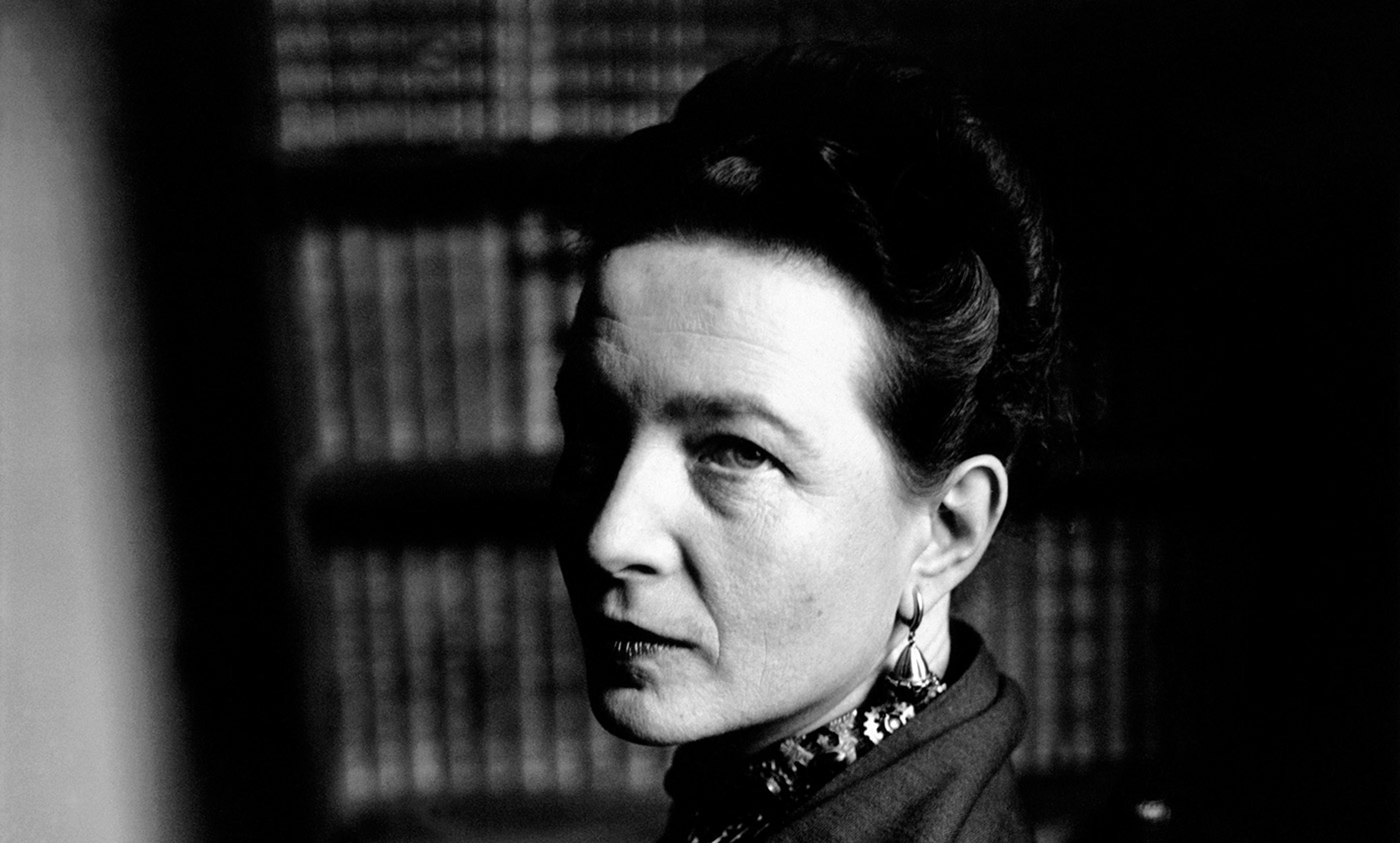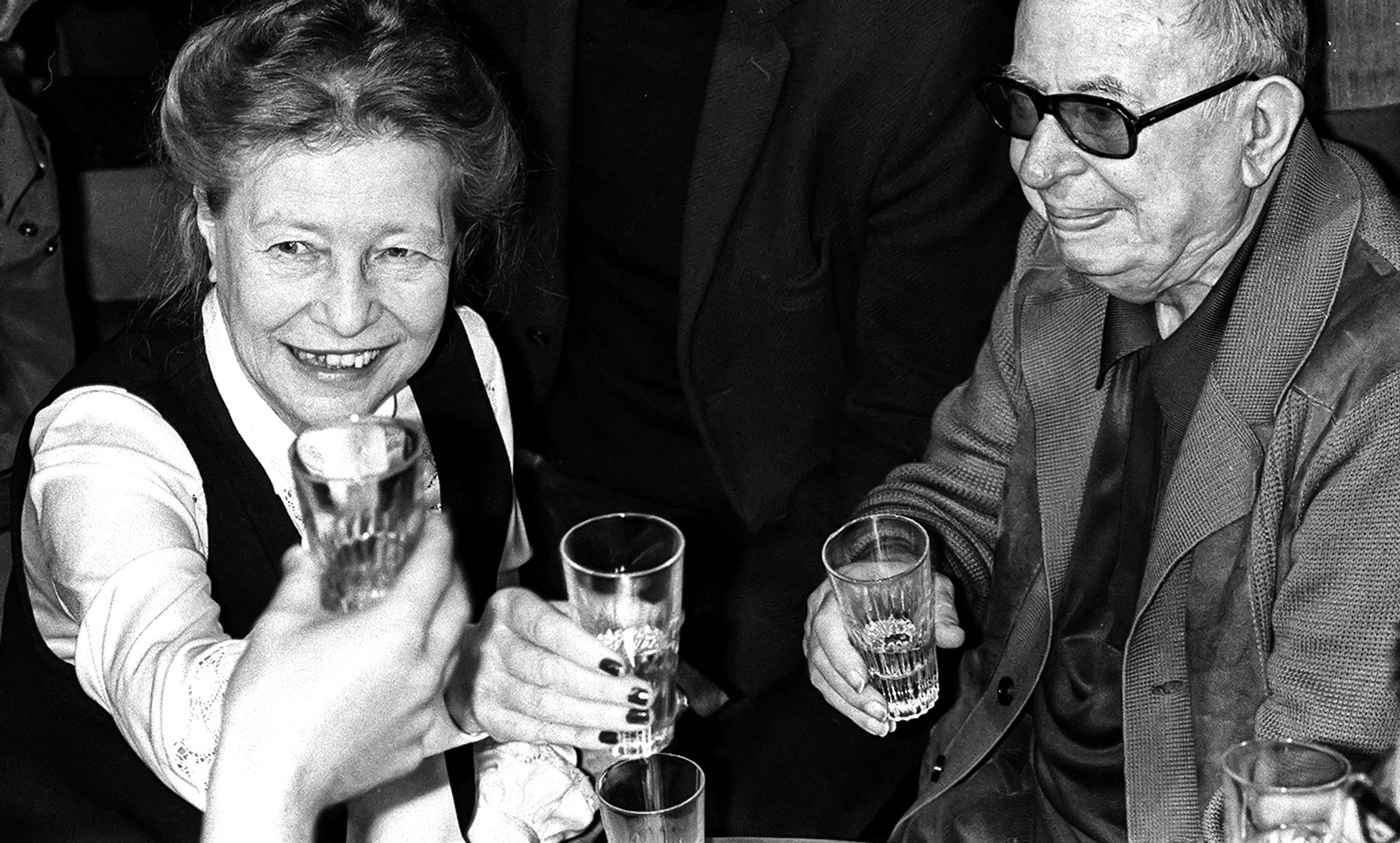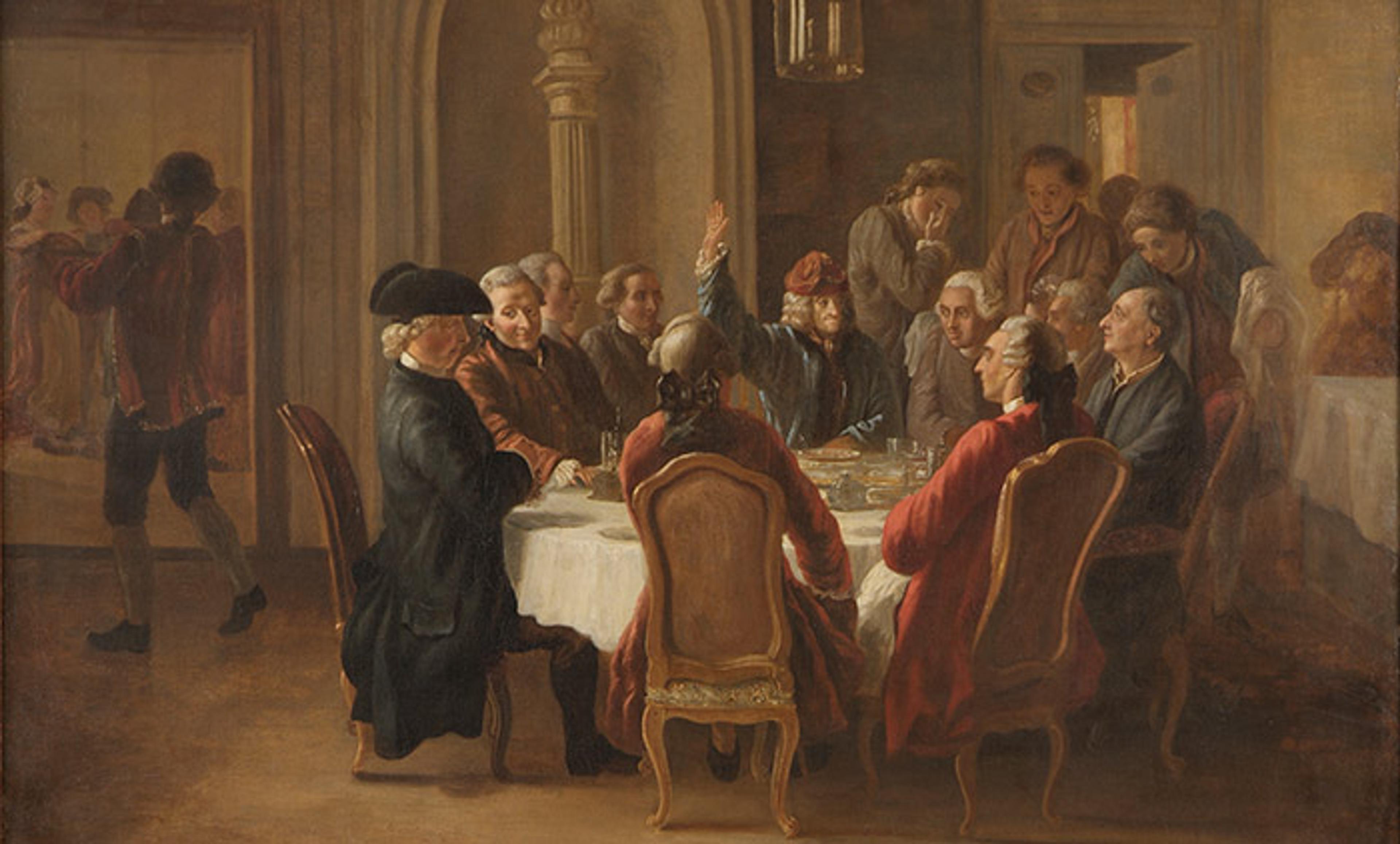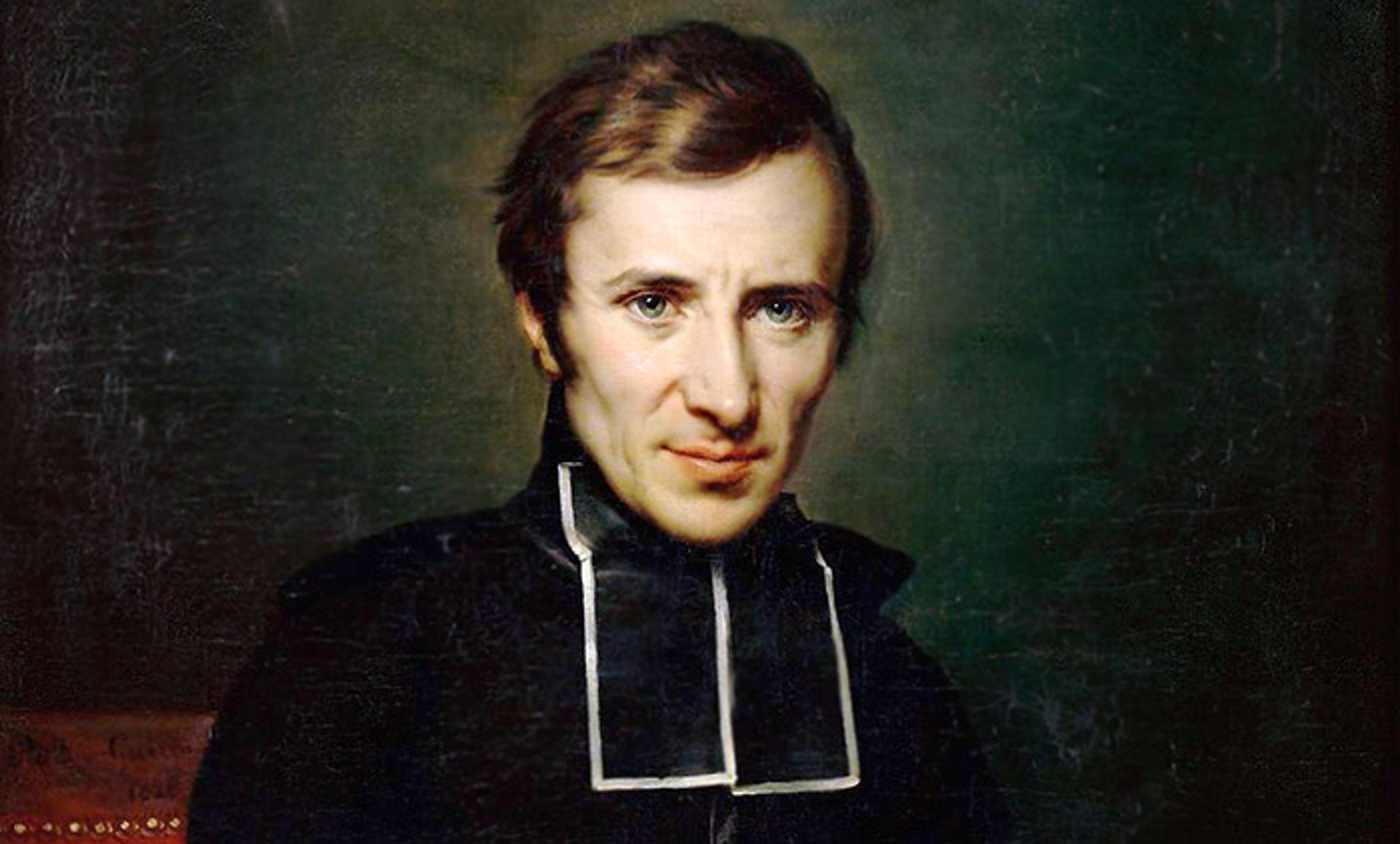Albert Camus by Cecil Beaton for Vogue in 1946. Photo by Getty
They were an odd pair. Albert Camus was French Algerian, a pied-noir born into poverty who effortlessly charmed with his Bogart-esque features. Jean-Paul Sartre, from the upper reaches of French society, was never mistaken for a handsome man. They met in Paris during the Occupation and grew closer after the Second World War. In those days, when the lights of the city were slowly turning back on, Camus was Sartre’s closest friend. ‘How we loved you then,’ Sartre later wrote.
They were gleaming icons of the era. Newspapers reported on their daily movements: Sartre holed up at Les Deux Magots, Camus the peripatetic of Paris. As the city began to rebuild, Sartre and Camus gave voice to the mood of the day. Europe had been immolated, but the ashes left by war created the space to imagine a new world. Readers looked to Sartre and Camus to articulate what that new world might look like. ‘We were,’ remembered the fellow philosopher Simone de Beauvoir, ‘to provide the postwar era with its ideology.’
It came in the form of existentialism. Sartre, Camus and their intellectual companions rejected religion, staged new and unnerving plays, challenged readers to live authentically, and wrote about the absurdity of the world – a world without purpose and without value. ‘[There are] only stones, flesh, stars, and those truths the hand can touch,’ Camus wrote. We must choose to live in this world and to project our own meaning and value onto it in order to make sense of it. This means that people are free and burdened by it, since with freedom there is a terrible, even debilitating, responsibility to live and act authentically.
If the idea of freedom bound Camus and Sartre philosophically, then the fight for justice united them politically. They were committed to confronting and curing injustice, and, in their eyes, no group of people was more unjustly treated than the workers, the proletariat. Camus and Sartre thought of them as shackled to their labour and shorn of their humanity. In order to free them, new political systems must be constructed.
In October 1951, Camus published The Rebel. In it, he gave voice to a roughly drawn ‘philosophy of revolt’. This wasn’t a philosophical system per se, but an amalgamation of philosophical and political ideas: every human is free, but freedom itself is relative; one must embrace limits, moderation, ‘calculated risk’; absolutes are anti-human. Most of all, Camus condemned revolutionary violence. Violence might be used in extreme circumstances (he supported the French war effort, after all) but the use of revolutionary violence to nudge history in the direction you desire is utopian, absolutist, and a betrayal of yourself.
‘Absolute freedom is the right of the strongest to dominate,’ Camus wrote, while ‘absolute justice is achieved by the suppression of all contradiction: therefore it destroys freedom.’ The conflict between justice and freedom required constant re-balancing, political moderation, an acceptance and celebration of that which limits the most: our humanity. ‘To live and let live,’ he said, ‘in order to create what we are.’
Sartre read The Rebel with disgust. As far as he was concerned, it was possible to achieve perfect justice and freedom – that described the achievement of communism. Under capitalism, and in poverty, workers could not be free. Their options were unpalatable and inhumane: to work a pitiless and alienating job, or to die. But by removing the oppressors and broadly returning autonomy to the workers, communism allows each individual to live without material want, and therefore to choose how best they can realise themselves. This makes them free, and through this unbending equality, it is also just.
The problem is that, for Sartre and many others on the Left, communism required revolutionary violence to achieve because the existing order must be smashed. Not all leftists, of course, endorsed such violence. This division between hardline and moderate leftists – broadly, between communists and socialists – was nothing new. The 1930s and early ’40s, however, had seen the Left temporarily united against fascism. With the destruction of fascism, the rupture between hardline leftists willing to condone violence and moderates who condemned it returned. This split was made all the more dramatic by the practical disappearance of the Right and the ascendancy of the Soviet Union – which empowered hardliners throughout Europe, but raised disquieting questions for communists as the horrors of gulags, terror and show trials came to light. The question for every leftist of the postwar era was simple: which side are you on?
With the publication of The Rebel, Camus declared for a peaceful socialism that would not resort to revolutionary violence. He was appalled by the stories emerging from the USSR: it was not a country of hand-in-hand communists, living freely, but a country with no freedom at all. Sartre, meanwhile, would fight for communism, and he was prepared to endorse violence to do so.
The split between the two friends was a media sensation. Les Temps Modernes – the journal edited by Sartre, which published a critical review of The Rebel – sold out three times over. Le Monde and L’Observateur both breathlessly covered the falling out. It’s hard to imagine an intellectual feud capturing that degree of public attention today, but, in this disagreement, many readers saw the political crises of the times reflected back at them. It was a way of seeing politics played out in the world of ideas, and a measure of the worth of ideas. If you are thoroughly committed to an idea, are you compelled to kill for it? What price for justice? What price for freedom?
Sartre’s position was shot through with contradiction, with which he struggled for the remainder of his life. Sartre, the existentialist, who said that humans are condemned to be free, was also Sartre, the Marxist, who thought that history does not allow much space for true freedom in the existential sense. Though he never actually joined the French Communist Party, he would continue to defend communism throughout Europe until 1956, when the Soviet tanks in Budapest convinced him, finally, that the USSR did not hold the way forward. (Indeed, he was dismayed by the Soviets in Hungary because they were acting like Americans, he said.) Sartre would remain a powerful voice on the Left throughout his life, and chose the French president Charles de Gaulle as his favourite whipping boy. (After one particularly vicious attack, de Gaulle was asked to arrest Sartre. ‘One does not imprison Voltaire,’ he responded.) Sartre remained unpredictable, however, and was engaged in a long, bizarre dalliance with hardline Maoism when he died in 1980. Though Sartre moved away from the USSR, he never completely abandoned the idea that revolutionary violence might be warranted.
Philosophy Feud: Sartre vs Camus from Aeon Video on Vimeo.
The violence of communism sent Camus on a different trajectory. ‘Finally,’ he wrote in The Rebel, ‘I choose freedom. For even if justice is not realised, freedom maintains the power of protest against injustice and keeps communication open.’ From the other side of the Cold War, it is hard not to sympathise with Camus, and to wonder at the fervour with which Sartre remained a loyal communist. Camus’s embrace of sober political reality, of moral humility, of limits and fallible humanity, remains a message well-heeded today. Even the most venerable and worthy ideas need to be balanced against one another. Absolutism, and the impossible idealism it inspires, is a dangerous path forward – and the reason Europe lay in ashes, as Camus and Sartre struggled to envision a fairer and freer world.






